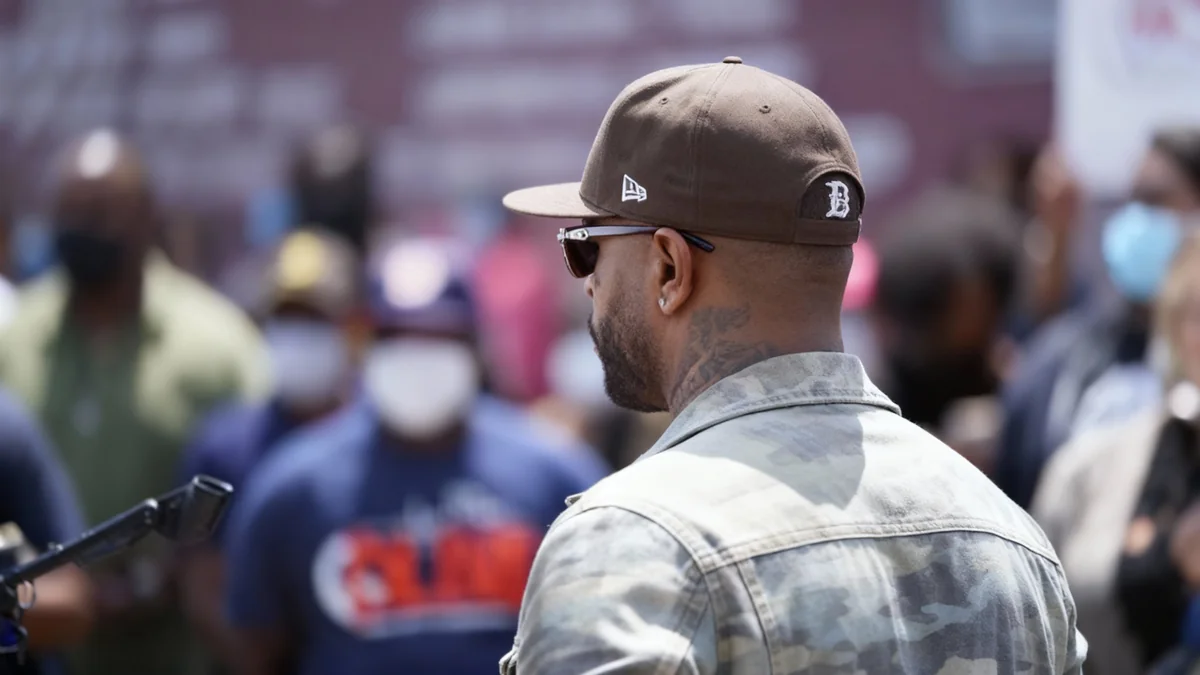Renowned hip-hop artist Royce Da 5'9" has openly discussed his ongoing battle with a neurological condition, lingual dystonia. This health challenge has significantly impacted his creative process and ability to record music, a revelation made during a recent interview. Despite the difficulties, the artist reports making progress and has even resumed recording new material.
Key Takeaways
- Royce Da 5'9" is battling lingual dystonia, a neurological condition.
- The condition causes spasms affecting speech and music recording.
- He also has a genetic COMT gene condition impacting dopamine processing.
- The artist experienced involuntary facial and tongue movements.
- After a long diagnostic journey, he is now on the road to recovery and recording again.
Understanding Lingual Dystonia
Lingual dystonia is a rare neurological disorder characterized by involuntary muscle spasms in the tongue. These spasms can interfere with speech, swallowing, and other oral functions. For a recording artist, this condition presents unique and severe challenges, directly affecting vocal performance and delivery.
The rapper explained the precise nature of his condition, stating, "There’s some kind of interruption in the nerve firing off in my tongue." This interruption leads to the spasms that have made his creative work more complex over the past few years. The condition has required extensive medical attention and a long diagnostic process.
Fact Check
- Lingual Dystonia: A focal dystonia affecting the tongue muscles.
- Symptoms: Involuntary spasms, difficulty speaking, chewing, and swallowing.
- Impact on Artists: Can severely hinder vocal performance and articulation.
The Dopamine Connection
Beyond lingual dystonia, Royce Da 5'9" also discussed a genetic predisposition. He possesses a condition called the COMT gene, which slows down the processing of dopamine in his system. Dopamine is a crucial neurotransmitter involved in motor control, motivation, and reward.
Further tests revealed an imbalance in his brain's dopamine production. "The left hemisphere of my brain produces less dopamine than the right," he shared. This imbalance, combined with lower overall dopamine levels, can lead to symptoms similar to those found in conditions like Parkinson's disease and ADHD, including involuntary movements.
"When your dopamine is low, that’s like Parkinson’s, ADHD… I had involuntary movements in my face and in my tongue. So they went on this long thing where they would put me on all these different kinds of medicines."
The Role of Dopamine in Motor Control
Dopamine plays a vital role in the brain's ability to control movement. When dopamine levels are insufficient or imbalanced, the brain struggles to send smooth, coordinated signals to muscles. This can result in tremors, stiffness, and involuntary movements, which Royce Da 5'9" experienced in his face and tongue.
The artist's medical journey involved trying various medications to manage these symptoms. The path to finding the right treatment and diagnosis was complex, involving multiple consultations and adjustments to his regimen.
Medical Background
The COMT gene provides instructions for making an enzyme that helps break down certain neurotransmitters, including dopamine. Variations in this gene can affect how quickly dopamine is processed, potentially leading to higher or lower levels in different brain regions. Low dopamine is associated with various neurological and psychological conditions.
Road to Recovery and Resuming Work
After a challenging period marked by improper diagnoses and varied treatments, Royce Da 5'9" reports significant progress. He indicates that he is "almost through it," suggesting a positive outlook on his health battle. This journey has been extensive, but his determination to overcome these obstacles remains clear.
A significant milestone in his recovery is the ability to return to the studio. He has started recording music again, a testament to his resilience and the effectiveness of his current treatment plan. This return to his craft is a hopeful sign for his fans and the wider hip-hop community.
Creative Output Continues
Despite his personal health struggles, Royce Da 5'9" continued to contribute to the music industry. He recently executive produced Big L's posthumous album, Harlem's Finest: Return of the King. He expressed a desire to have been recording his own music during that project, highlighting the impact his condition had on his personal creative output at the time.
His ability to manage and contribute to such a significant project while dealing with his health issues underscores his dedication. Now, with his own recording sessions underway, fans can anticipate new music directly from the artist himself, marking a new chapter in his career.
Impact on the Hip-Hop Community
Royce Da 5'9" is a respected figure in hip-hop, known for his lyrical prowess and intricate rhyme schemes. His openness about his health challenges brings awareness to neurological conditions that can affect anyone, including artists whose livelihoods depend on their physical and vocal abilities. His story provides inspiration to others facing similar battles.
The support from his peers and fans has been evident throughout his journey. The hip-hop community often rallies around its members, and Royce Da 5'9"'s transparency fosters a deeper connection with his audience, who celebrate his resilience and anticipated return to full artistic form.
- Awareness: His story raises awareness about lingual dystonia and dopamine-related conditions.
- Inspiration: Serves as an inspiration for individuals facing health challenges.
- Community Support: Highlights the strong bonds within the hip-hop community.
As Royce Da 5'9" continues his recovery, his journey reminds us of the profound impact health can have on creative expression and the strength required to overcome such personal hurdles. His return to recording signals a triumphant step forward.




